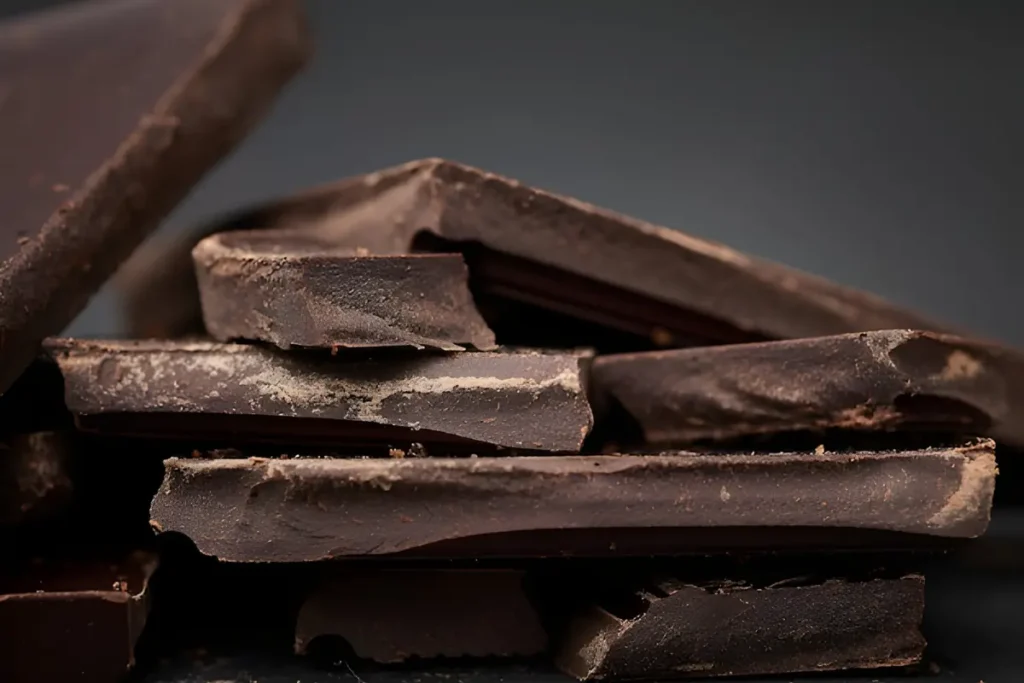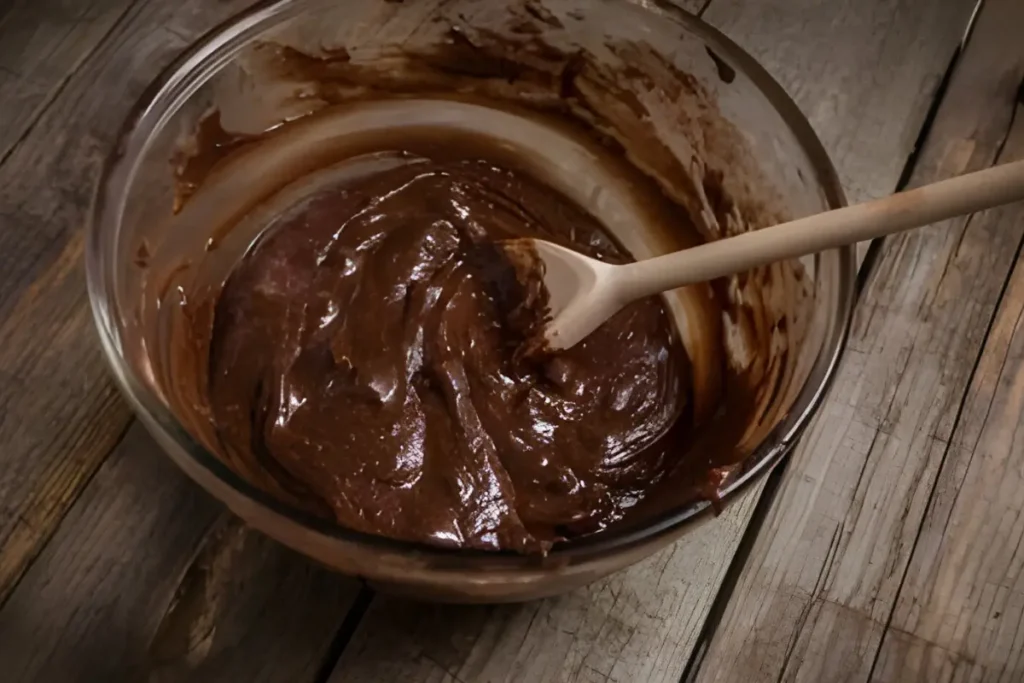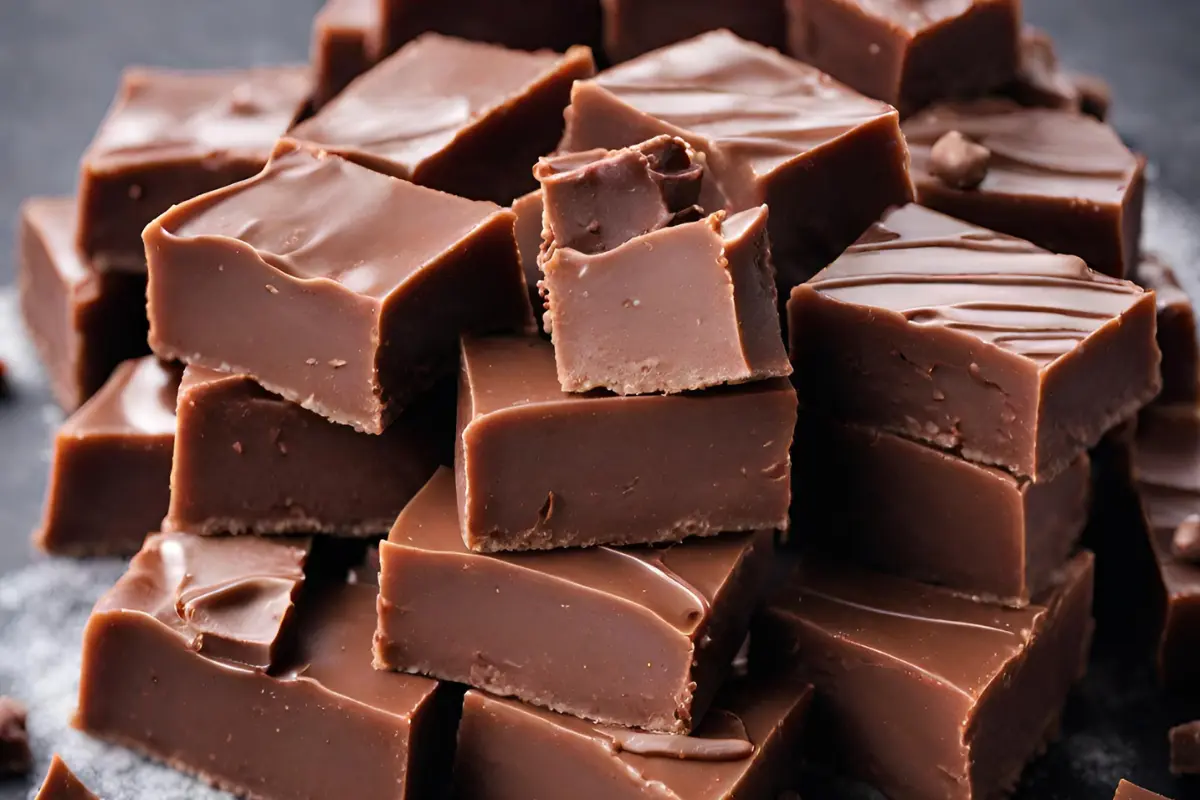Introduction
Achieving the perfect fudge consistency is both an art and a science, requiring meticulous adjustment of ingredient ratios and understanding the delicate balance between sweetness and texture. If you’ve ever encountered fudge that’s too soft or failed to set properly, you’re not alone. This guide is dedicated to uncovering the secrets behind the ideal fudge texture, offering strategies and techniques that lead to consistently perfect results. Whether you’re battling with too soft fudge or aiming to refine your fudge-making process, the journey to mastering the perfect consistency starts here.
Introduction to Fantasy Fudge
Exploring the Challenge of Soft Fantasy Fudge
Fantasy fudge, a beloved treat known for its rich flavor and creamy texture, is a cornerstone of holiday traditions and sweet indulgences. Yet, the quest for the perfect batch can sometimes lead to a soft, less-than-ideal consistency. Understanding the delicate balance between ingredients and the cooking process is key to achieving the desired texture. But fret not, for this guide is your beacon through the fudgy fog, illuminating the path to perfection.
The Importance of Texture in Fudge Making
The texture of your fantasy fudge isn’t just about mouthfeel; it’s a testament to the precision and care put into its creation. A perfect fudge should be smooth and firm, holding its shape while melting delightfully in your mouth. When fudge turns out too soft, it can be a sign of various missteps in the fudge-making process, from the sugar’s crystallization to how well the ingredients were blended. Recognizing these pitfalls is the first step in troubleshooting your soft fudge dilemma.
In our journey towards the ultimate fudge, we’ll tackle these challenges head-on, ensuring your fudge stands firm in both texture and taste. For those embarking on this sweet endeavor for the first time or looking to perfect their craft, exploring this fantasy fudge recipe can provide you with a solid foundation. Stay tuned as we delve deeper into the common causes behind soft fantasy fudge and unlock the secrets to avoiding them, making your fudge-making endeavors foolproof.

Understanding Why Fudge Becomes Too Soft
Navigating the sweet path to perfect fudge involves understanding the intricacies behind its texture. Let’s dissect the reasons your fantasy fudge might be leaning towards the softer side, ensuring you’re well-equipped to tackle them in your next culinary venture.
Identifying the Culprits Behind Soft Texture
Inadequate Cooking Temperature
The temperature at which you cook your fudge is pivotal. If the mixture doesn’t reach the soft ball stage, between 234-237°F (112-114°C), it won’t set properly, resulting in a too-soft texture. Using a reliable candy thermometer ensures you hit the mark precisely, avoiding the undercooked fate that befalls many fudge endeavors.
Incorrect Sugar-to-Liquid Ratio
Balancing your ingredients is crucial. Too much liquid or too little sugar can prevent the fudge from firming up as it should. Ensuring you follow a tried-and-tested recipe can mitigate this issue, setting the foundation for flawless fudge.
Effect of Humidity and Storage Conditions
Humidity is fudge’s silent adversary, influencing its setting process. High humidity can add unwanted moisture to your fudge, making it challenging to achieve the desired firmness. Storing your fudge in a cool, dry place helps maintain its ideal texture, safeguarding your efforts from the dampness in the air.
By pinpointing these common pitfalls, you’re better prepared to adjust your fudge-making process. Whether it’s keeping a closer eye on the thermometer, measuring your ingredients more accurately, or considering the day’s humidity before starting, these insights are invaluable. For a deeper dive into perfecting your craft, exploring the secret to good fudge offers advanced strategies and insights. Next, we’ll explore the key techniques for achieving the perfect fudge consistency, further honing your skills for that impeccable batch every time.
Consistency Perfecting Fudge Consistency: Essential Techniques
Mastering the art of fudge making isn’t just about avoiding pitfalls; it’s about embracing techniques that ensure success. Here, we delve into the strategies that lead to the perfect fudge consistency, making your confectionary creations the highlight of any dessert table.
Embracing the Craft of Fudge Making
The Critical Role of Accurate Temperature Measurement
The candy thermometer is not just a tool; it’s your guide to the promised land of perfect fudge. By accurately measuring the temperature of your fudge mixture, you ensure it reaches the soft ball stage essential for setting. A good quality candy thermometer is a wise investment for any aspiring fudge maestro.
Understanding the Science Behind the Sweetness
Navigating Sugar Crystallization
Stirring plays a dual role in the fudge-making process. Initially, minimal stirring is necessary to prevent premature sugar crystallization. However, once the mixture reaches the correct temperature and is removed from the heat, stirring becomes crucial to achieve small, uniform crystals that contribute to fudge’s smooth texture. The timing and method of your stirring technique can make all the difference. To understand the fascinating science behind this process, dive into the details with Working with Sugar: the Magic of Crystallization, which illuminates the magical transformation sugar undergoes to form those perfect crystals.
Fine-Tuning for Flawless Fudge
Adjusting Ingredient Ratios for Desired Texture
Achieving the perfect texture often requires tweaking ingredient ratios, especially if you find your fudge consistently too soft. Increasing the sugar content can help the mixture set firmer, while reducing liquids ensures there’s less moisture to evaporate. Experimentation, guided by a foundational recipe, can lead to discovering the ideal balance for your particular taste and texture preference. For those keen to refine their technique further, examining common fudge-making challenges in why is my fantasy fudge grainy can offer additional insights into achieving the perfect consistency.
With these key techniques at your disposal, you’re well on your way to creating fudge with a consistently perfect consistency. Remember, each batch of fudge is an opportunity to refine these skills, bringing you closer to your confectionary goals. Stay tuned as we next tackle how to troubleshoot and fix soft fudge, ensuring even less-than-perfect attempts can be salvaged and enjoyed.

Troubleshooting and Fixing Soft Fudge
Even with the best intentions and careful preparation, fudge can sometimes end up softer than desired. Fortunately, there are steps you can take to salvage your confectionary masterpiece. This section explores how to troubleshoot and fix soft fudge, turning potential disappointments into delightful successes.
Salvaging Soft Fudge
Re-cooking Soft Fudge
If your fudge hasn’t set properly and remains too soft, re-cooking may be a viable solution. Gently reheat the fudge mixture, carefully monitoring the temperature until it reaches the soft ball stage. This can help evaporate excess moisture, giving your fudge a second chance to set correctly.
Adjusting Ingredients for Texture Correction
Sometimes, soft fudge can benefit from a slight adjustment in ingredients. For instance, adding a bit more sugar can increase the mixture’s ability to set firmer. However, this should be done cautiously to avoid making the fudge too sweet or altering its intended flavor profile.
When to Start From Scratch
In some cases, the best course of action might be to start anew. This is especially true if the fudge’s texture is far from salvageable or if the flavor has been compromised during attempts to fix it. Starting over provides a clean slate to apply the lessons learned from the previous batch.
Troubleshooting soft fudge requires patience and a willingness to experiment. Each batch offers valuable insights into the delicate balance of ingredients and conditions necessary for perfect fudge. As you become more adept at identifying and correcting issues, you’ll find your fudge consistently hitting the mark for both flavor and texture.
As we continue to explore the art of fudge making, our next section will address frequently asked questions about fudge texture issues. This will provide further clarity and support as you perfect your fudge-making skills.
Frequently Asked Questions About Fudge Texture Issues
In the world of fudge making, certain questions crop up time and again, especially regarding texture issues. This section aims to address these queries, offering clarity and confidence to both novice and experienced confectioners alike.
Addressing Common Questions
Why did my fudge never set?
Fudge that never sets is often the result of not reaching the correct temperature during the cooking process. It’s crucial to cook the fudge mixture until it hits the soft ball stage, which can be accurately monitored with a candy thermometer.
Can I fix fudge that’s too soft?
Yes, in many cases, too soft fudge can be fixed. Re-cooking the mixture while carefully monitoring the temperature can help achieve the desired consistency. Additionally, slight adjustments to the ingredient ratios may also remedy the issue.
How does weather affect fudge making?
Humidity plays a significant role in fudge making. On very humid days, the extra moisture in the air can prevent the fudge from setting properly, resulting in a softer texture. It might be best to attempt fudge making on days with lower humidity levels or to adjust the cooking time to account for the extra moisture.
These FAQs underscore the importance of temperature control, ingredient precision, and environmental conditions in achieving the perfect fudge texture. Armed with this knowledge, you’re better equipped to navigate the challenges of fudge making.
As we refine our skills further, the next section will delve into advanced tips for consistent fudge quality. These insights will help elevate your fudge from merely good to exceptional, ensuring your sweet treats are always a hit.
Advanced Tips for Consistent Fudge Quality
Elevating your fudge-making skills from good to exceptional requires attention to detail and a willingness to experiment. This section explores advanced tips that can help you achieve consistent fudge quality, ensuring each batch is as delightful as the last.
Elevating Your Fudge Making Skills
Experimenting with Flavors Without Compromising Texture
While traditional fudge recipes are time-tested, there’s room for creativity. Experimenting with flavors—be it through the addition of nuts, fruits, or even spices—can bring a new dimension to your fudge. The key is to balance these add-ins, ensuring they enhance rather than overwhelm the fudge’s texture and consistency.
The Importance of Quality Ingredients
The quality of your ingredients can significantly impact the final product. High-quality chocolate, pure vanilla extract, and fresh dairy products can make a noticeable difference in both flavor and texture. Investing in the best ingredients you can afford is a simple yet effective way to elevate your fudge.
Learning From Each Batch
Each batch of fudge is an opportunity to learn and improve. Take notes on what worked and what didn’t—whether it’s adjusting cooking times, ingredient ratios, or even the stirring technique. Over time, these insights will build your intuition and expertise in fudge making.
Mastering the art of fudge making is a journey of discovery and refinement. By embracing advanced techniques and maintaining a spirit of experimentation, you can consistently produce fudge that not only tastes incredible but also boasts the perfect texture.
In the concluding part of our guide, we will wrap up our exploration into achieving the perfect fantasy fudge, summarizing key points and offering final thoughts to inspire your fudge-making adventures.

Wrapping Up: The Journey to Perfect Fudge
With patience and practice, reaching perfect fudge consistency is an attainable goal for every home chef.
Achieving Fudge Perfection
The path to perfect fudge involves a deep understanding of the science behind the sweet treat, from the critical role of temperature in achieving the soft ball stage to the importance of the sugar-to-liquid ratio. By mastering these elements, you’re well on your way to avoiding the common pitfall of too soft fudge.
Experimentation and the willingness to learn from each batch are crucial. Whether it’s adjusting ingredient ratios or incorporating new flavors, each attempt at fudge making is an opportunity to refine your technique and discover what works best for you.
Quality ingredients are the foundation of great fudge. Opt for high-quality chocolate, fresh dairy, and pure extracts to elevate the flavor and texture of your confectionery creations. And remember, the conditions under which you make fudge, including the humidity level, can significantly impact the outcome.
Final Thoughts
Making perfect fudge is both an art and a science. While the process may seem daunting at first, armed with the right knowledge and tools, anyone can master the craft. Embrace the process, enjoy the experimentation, and revel in the sweet rewards of your labor.
Thank you for joining us on this flavorful journey through the art of fudge making. May the rich aroma of chocolate fill your kitchen, and may your efforts result in smooth, delectable fudge that spreads joy with every bite.
Here’s to your success in fudge making, where the only thing sweeter than the process is the final product itself. Happy cooking!

